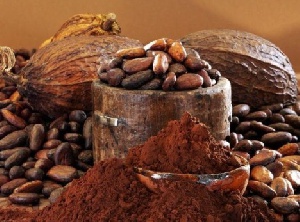Ghana’s cocoa production is projected to hit 850,000 tonnes this year, up from the 732,000 tonnes produced last year.
The Public Affairs Manager of COCOBOD, Noah K. Amenyah, who disclosed this, attributed the projected increase in cocoa production to good weather and rainfall.
Amenyah disclosed this in an interview with The Ghanaian Times, when the United States Deputy Secretary of Agriculture, Krysta Harden, paid a working visit to a cocoa farm here.
Ms. Harden is leading a trade mission on a three-day visit to Ghana to expand export and import opportunities for US agriculture in the country and sub-Saharan Africa, forge relationships and learn about the market conditions and business environment in the region.
She is accompanied by leaders from five State Departments of Agriculture and representatives of 26 US agri-businesses and organisations.
As part of the visit, Ms Harden will sign a Food for Progress agreement with the government of Ghana, a $56-millon five-year project aimed at revamping the poultry industry.
Mr. Amenyah explained that the production levels which had been recorded so far this year were very encouraging and the country would meet the production target set.
He attributed the drop in production level to 732, 000 tonnes last year from the one million tonnes recorded in 2009, to “fatigue in production”.
He said, “After recording a bumper harvest, fatigue in production sets in the following year, and that accounted for the fall in production recorded last year”.
Mr. Amenyah said the cocoa trees had overcome the fatigue in production and production was expected to pick up this year and the subsequent years.
The Public Affairs Manager said COCOBOD has launched a study to assess the impact of mining on the cocoa industry, saying the activities of illegal mining operators were having a toll on cocoa in the country.
He commended Ms. Krysta for deciding a cocoa farm to see at hand the process of cocoa production.
Ms. Harden, in an interview with the media, said she is in the country to seek for export and import investment opportunities in the agricultural sector, particularly in the areas of poultry exports to Ghana and fresh fruit export to the U.S.
“Sub-Saharan Africa’s strong economic outlook, growing middle class, and surging demand for consumer-oriented food creates a promising market for U.S food and agricultural products,” she said, adding that “over the past decade, U.S agricultural exports to this region increased more than 50 percent, totalling $2.3 billion in 2014”.
She said U.S agricultural exports to Ghana last year, amounted to $129 million.
On the visit to the cocoa farm, she said it was to afford her the opportunity to observe the process involved in cocoa production from planting to harvesting as well as the challenges the farmers go through.
Ms. Harden commended the farmers for their hard work and which kept constant quality cocoa supply to the international market.
The Chief of Party of World Cocoa Foundation African Cocoa Initiative said his outfit had collaborated with the United States Department of Agriculture and United States Agencies for International Development to train and build the capacity of farmers to enhance productivity in cocoa production.
He disclosed that the two US organisations had funded the WCF to conduct a study to collect the DNA of 10,000 cocoa trees across the Sub-Saharan Africa for cross-breeding to support the development quality of hybrid cocoa seeds which produce higher yields.
Business News of Sunday, 22 November 2015
Source: Ghanaian Times













